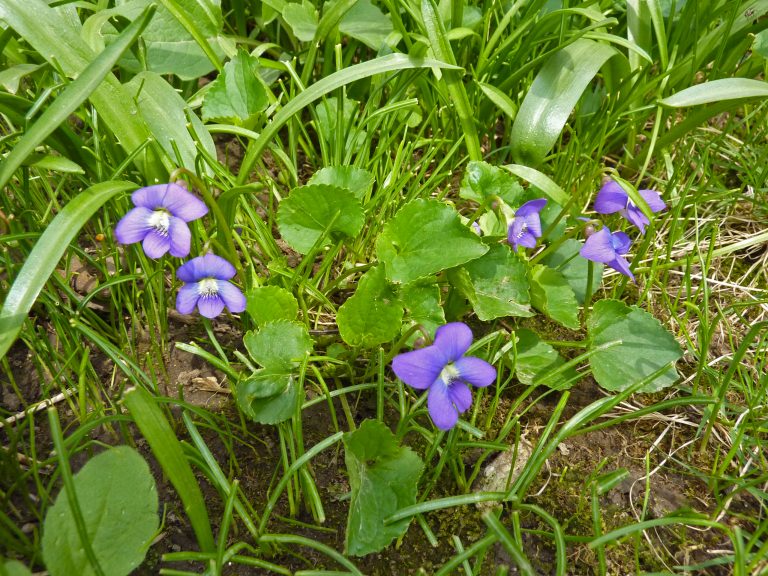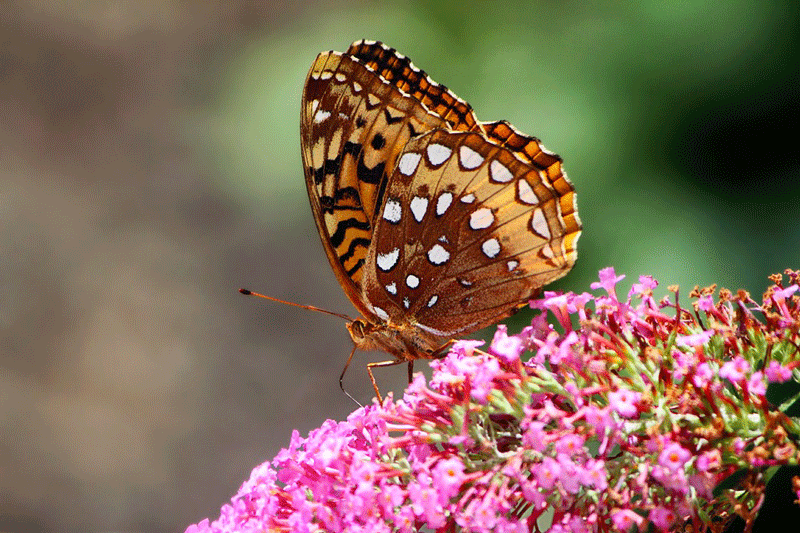This post is part of a series highlighting some of the best plants for pollinators from coast-to-coast. Drawing from our books 100 Plants to Feed the Bees, Gardening for Butterflies , and our Monarch Nectar Plant Guides.
Common Blue Violet
Viola sororia
Violets are often bemoaned as “weeds” when found in lawns, and otherwise impugned for their tendency to easily reseed and spread. With their heart shaped leaves and cheery blue flowers, violets aren’t really bad guys – in fact they are the host plant for a wide range of butterflies known as fritillaries. Like monarchs, whose caterpillars only feed on milkweed, the fourteen species of greater fritillaries (genus Speyeria) and sixteen lesser fritillaries (genus Bolloria) will only lay their eggs where there are violets for their larva to feed upon. As described by Beatriz Moisset, writing for the US Forest Service “Female great spangled fritillaries seem to be able to find the violets even after they have wilted and blown away. It is possible that they can smell the roots of violets. Curiously, females of other species of fritillaries do not appear to be terribly careful about finding the presence of violets; they seem to choose shaded, weedy places that are likely to favor the growth of violets, thus many eggs are lost when the larvae search in vain for their food and cannot find it. These mothers can afford to be careless because they lay as many as two thousand eggs, so it does not matter if many are lost.”
Violets are also host plants for the mining bee Andrena violae, a specialist pollinator common to the Eastern U.S. that only visits violets.

Thriving in wet, partial shade, violets can be a great source of early spring color in woodland gardens. The plants bloom before many others and are then scarcely noticeable as other flowers emerge.
Native Range: Common blue violet occurs throughout the eastern U.S. and southeast Canada, though other native species of violets can be found practically everywhere across North America.
Best for: Early spring color in partial shade gardens and larval host plant for fritillary butterflies.




